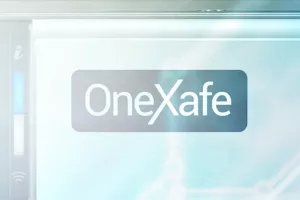Ransomware. We can’t escape it. Banks saw a 1318 percent year-over-year increase in ransomware attacks in the first half of 2021. For healthcare, the increase was 123 percent. Indeed, some targets are more attractive than others to cybercriminals, but every industry is vulnerable. According to the SonicWall 2021 Cyber Threat report mid-year update, there were 304.7 million ransomware attacks over that same period. If you’re an IT pro, you are likely already trying to counter that threat by backing up your organization’s data. But your backups may still be vulnerable, and their loss could be the worst consequence of an attack. That’s why most ransomware attacks target backup systems when they encrypt endpoint data—to prevent recovery. And that’s why StorageCraft, an Arcserve company, created OneXafe.
Immutable Storage Is the Key

Get Ease of Deployment You Can Count On
As DCIG explains, OneXafe offers a standard file system interface that supports NFS and SMB protocols. That makes deployment easy, with OneXafe tapping these widely used protocols to present shared network drives to applications and clients. These same protocols discover and store data on OneXafe. While using these protocols can expose backups to ransomware attacks, OneXafe makes that problem moot thanks to its immutable object store.
Immutable Object Store Is the Magic
The OneXafe system counters ransomware attacks by running a file system atop its immutable object store. Applications and clients only see and write data to the OneXafe file system. Beneath the file system, OneXafe automatically stores data in its underlying object store. DCIG says that’s what makes OneXafe’s architecture stand out from other network-attached storage (NAS) offerings. When OneXafe stores file data as objects, the data is in its original, unaltered state.
OneXafe also compresses and deduplicates the file data stored in each object, cutting your storage requirements and creating a cryptographic integrity check for each object that adds a cryptographic hash. Even if a ransomware attack tries to hack a OneXafe system, hashes associated with objects that existed before the attack remain intact. Ransomware can’t do any damage to those files.
Stage Recoveries If Ransomware Strikes
OneXafe automatically takes a system-wide snapshot every 90 seconds, with each snapshot referencing data in its exact state at that moment. DCIG adds that using those snapshots, your organization can perform a system-wide recovery of OneXafe, choosing any of the stored snapshots as your recovery point. So you can get back up and running in no time with the data you've stored before a ransomware attack.
DCIG: OneXafe Plays a Critical Role in Ransomware Response
In its review, DCIG notes that every organization should use available cybersecurity software as its first line of defense against ransomware attacks. A great defense, in this case, is the best offense. But your team can't win every game, and cybersecurity hardware can never be 100 percent effective. So DCIG says you should have a recovery plan in place and that an immutable object store can play a critical role in your recovery. OneXafe delivers on that promise.
Get the Details
Read the complete DCIG review, then learn more about the benefits OneXafe can bring to your organization. And if you're ready to dig into the details about getting started with OneXafe, schedule a demo.
You May Also Like
- Backup and Disaster Recovery Data Resilience
Introducing Arcserve 10000 Series Appliances: Rapid Deployment. Enhanced Security. Simplified Compliance.
December 10th, 2024 - Backup and Disaster Recovery Business Continuity Cloud Compliance Cybersecurity Data Protection Data Resilience Data Storage Ransomware
The Importance of Versatile Cloud Data Protection Support in a Multicloud World
December 3rd, 2024 - Backup and Disaster Recovery Business Continuity Cybersecurity
Tech Conversations - Beyond the Arc: Cyber Confidence for Business Leaders
December 2nd, 2024